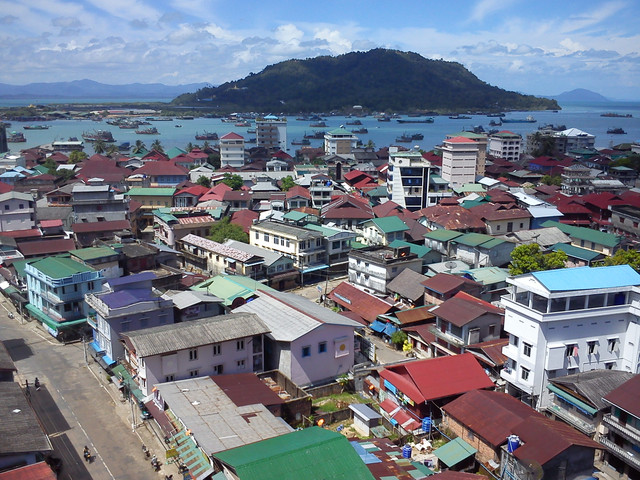Einleitung
5 Jahre - und ein paar Tage, habe selber viel zu tun momentan - sind es schon her, seit dem ich mir ein Account auf OpenStreetMap angelegt habe. Für mich fühlt es sich eher wie 20 Jahre an, weil sich so viel verändert hat, sowohl bei mir, als auch in der Welt um mich herum. Ich weiß aber noch, warum ich damit angefangen habe und wo ich stand zu dem Zeitpunkt.
Hintergrund
In dieser Zeit finge ich ernsthaft an, mich mehr und mehr für Datenschutz zu interessieren. Davor hatte ich dieselben Medien benutzt, die die meisten benutzen würden - ein stinknormales Android mit Google-Account und WhatsApp, für E-Mails vertraute ich GMX und die sozialen Netzwerke meiner Wahl waren YouTube und Twitter (letzteres heißt mittlerweile X, da E. Musk diesen Buchstaben so sehr liebt wie er selbst). Über den Kuketz-Blog bin ich erstmals auf OpenStreetMap gestoßen. Die Datengrundlage in meinem Wohnort war aber recht alt zu dem Zeitpunkt und nach einiger Wartezeit kam ich zum Entschluss, selber anzupacken, da sich die Lage nicht verbessert hatte.
In dieser Zeit hat sich viel bewegt - sowohl in der OSM-Community als auch außerhalb. Ich habe aber aus persönlichen und gesundheitlichen Gründen kaum mit der Community interagiert, sondern eher meine eigenen Sachen gemacht. Jedoch haben wir uns dennoch ohne große Kommunikation gegenseitig geholfen.
Die meisten Edits waren eher kleiner und spontaner Natur, aber ich hatte auch einzelne größere Projekte durchgeführt:
Größere Projekte
Bus-Projekt LNG Fulda
Ende 2019 wurde das Liniennetz von den Behörden neu gestaltet, was ich als Gelegenheit nutzte, die alten Routen und Relationen auf Stand zu bringen und in das neue Public Transport Schema zu übertragen. Teilweise was das sehr aufwändig, besonders bei langen Überlandlinien mit seinen zahllosen Varianten für den Schulverkehr. Da ich kein Auto habe, sondern “nur” ein Fahrrad ohne E-Motor, dauerten die Erkundungstouren teilweise von früh morgens bis in die Nacht hinein. Entsprechend habe ich viele Kilometer zurückgelegt - der Rekord liegt bei 120 km. Leider kam ich bis heute nicht dazu, das Hünfelder Land zu erkunden.
Dorferneuerung Großenlüder-Bimbach
Einige Zeit lang wohnte ich dort und bemerkte, wie auf dem Land üblich, das die Daten spärlich und teilweise veraltet waren. Mithilfe der Hintergrundbilder Hessen DOP20 und Hessen ALKIS habe ich das gesamte Dorf, Straße für Straße, Haus für Haus, überarbeitet. Möglicherweise war ich etwas zu eifrig, doch konnte ich auch gut lernen, wie die heutigen Pendlerdörfer strukturiert sind. Nach meinem Umzug wurde das Schema fürs Straßenparken überarbeitet, wodurch diese Daten veraltet sind. Ich hoffe, jemand Ortskundiges kann da mal nachschauen.
Grenzdaten Stadt Fulda
2021 habe ich das Amt gefragt, ob die die Grenzen der Stadt Fulda und seiner Stadtteile kennen und dem OSM-Projekt übergeben würden. Für mich persönlich diente es in erster Linie der korrekten Bestimmung es ref_name-Tags bei Haltestellenbereichen, aber sicherlich gibt es noch viele andere Zwecke. Dem wurde glücklicherweise zugestimmt und ich konnte auch die einzelnen place-Tags nach Lage, Struktur, Größe usw. besser bestimmen.
Zukunft
Was ich in Zukunft vor habe, sobald ich wieder mehr Zeit habe, ist, die GTFS-Daten der RhönEnergie im Rahmen des Bus-Projekts zu übertragen. Leider weiß ich nicht, wie man das anstellt. Vielleicht frage ich die Community im Forum nach oder schaue, ob jemand das bereits gelöst hat. Außerdem will ich die einzelnen Haltestellen abfahren und vervollständigen.
Eventuell interagiere ich auch etwas mehr mit der Community, wer weiß schon. Bis dahin kartiere ich fleißig weiter und verbessere die Karte Stück für Stück.
Grüße, greenie11















